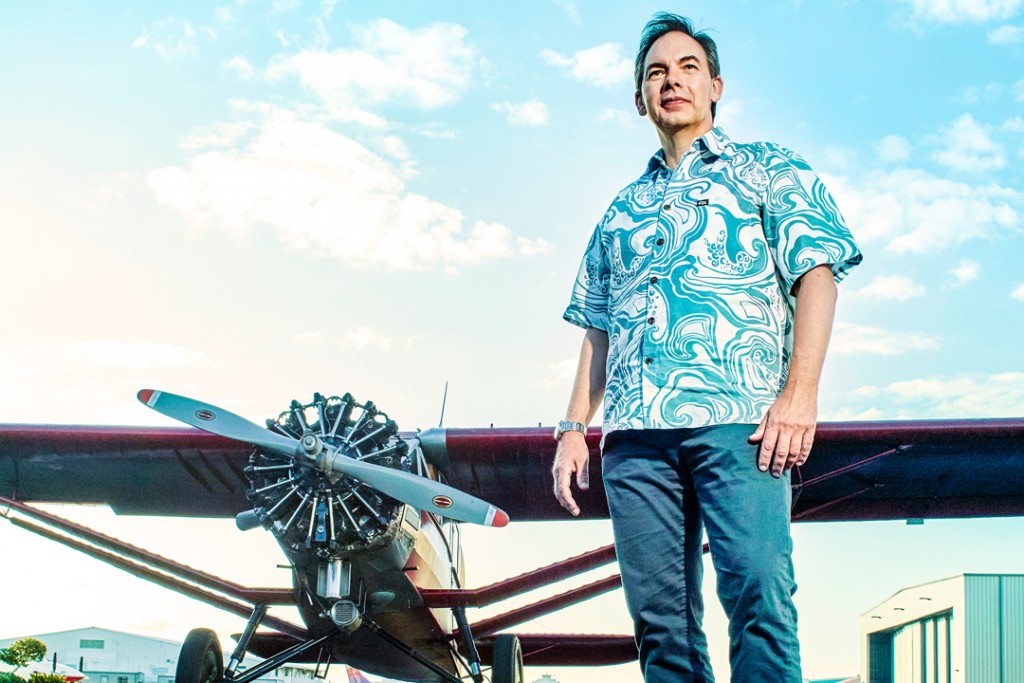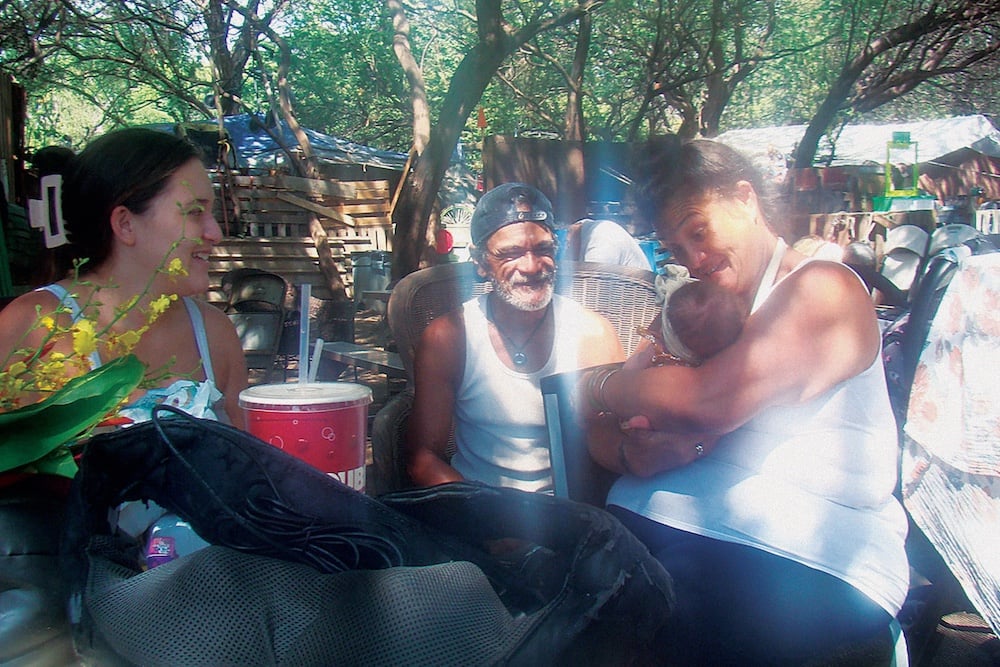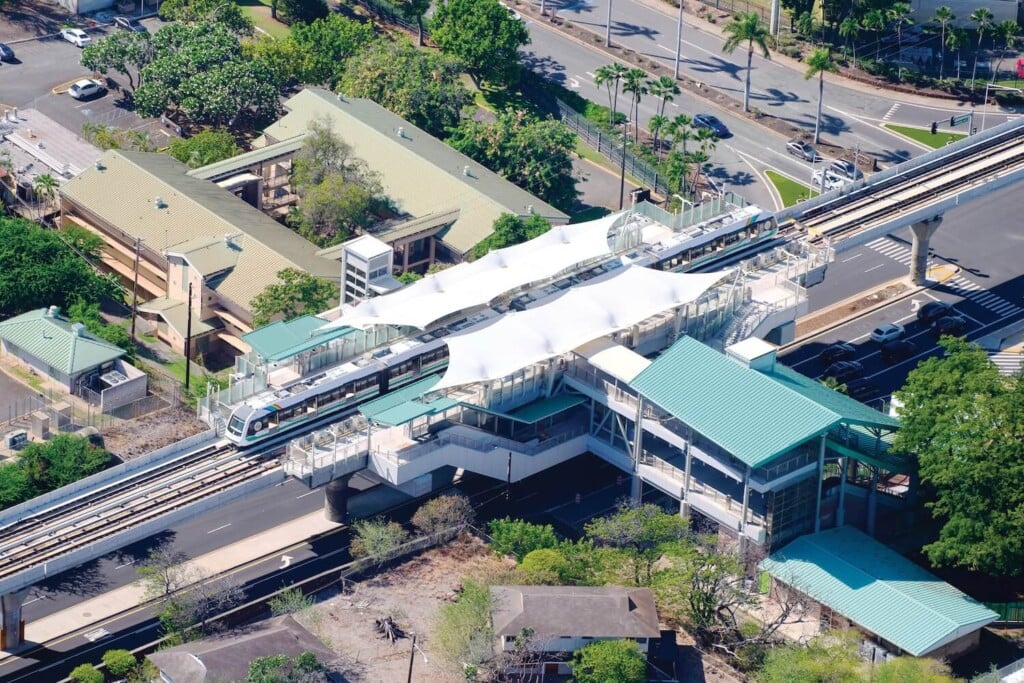Mark Dunkerley of Hawaiian Airlines

Since taking the helm in 2005, just as Hawaiian Airlines was coming out of bankruptcy, Dunkerley has presided over a period of unprecedented growth. With new routes to Japan, Korea, China, Australia and New Zealand, the airline has spent billions of dollars on new airplanes and hired hundreds of new employees. We speak with Dunkerley about the long-term planning that makes all this possible.
Q:
Hawaiian Airlines, which is in the midst of a massive expansion, demonstrates the value of long-term planning, something we’re not good at as a state.
A:
First, let me say, if you didn’t ask about that, I would talk about it anyway. The need for long-term planning in Hawaii is critical, because it’s something we don’t do well. We live in a community that has so many positive attributes, but we don’t have it in our community DNA to think and plan for the long term. I think that comes at a tremendous ultimate cost to the community and all of us who live here.
In running Hawaiian Airlines, it is important to always have a long-term plan and to refine it periodically. Otherwise, the long term is made up of a series of sequential short terms. When that happens, you don’t move in a straight line: You look back and it’s apparent your business has been wandering like a drunken sailor, lurching from one exigency to another.
Q: So, how does Hawaiian Airlines approach long-term planning?
Our planning horizon is typically about 20-plus years out. We start by asking ourselves, “Where do we think our future customers will come from? What will the competitive landscape look like? What are our natural strengths and weaknesses?” Having answered all of those questions, we try to figure out a strategy that’s consistent with those threats and opportunities and constraints.
The most fateful decision we made at Hawaiian Airlines was when we came out of bankruptcy, in 2005, and began thinking about what our long-term strategy should be. We had, in essence, a couple of choices. We could grow our operations flying between the Neighbor Islands and points on the U.S. Mainland, using narrow-body airplanes, like Boeing 737s and 757s. That’s essentially what Alaska Airlines has done. The basis of their strategy has been to fly these aircraft to Neighbor Islands and really grow that business.
Our other alternative was to look to Asia instead. We concluded that, over time, Hawaii tourism is going to become increasingly defined by visitors from Asia, because that’s where the economic growth is. The constraint on us then was we didn’t have the economic balance sheet to do both strategies at the same time. So we elected to turn our focus to Asia, and to order new, long-range airplanes to fulfill that mission.
Q: Was that a contentious decision?
There were a lot of arguments, because what the alternative strategy had going for it was that it would just be a deeper participation in markets that we already knew and already served. The flip side, of course, was that it would be increasing our concentration in a very constrained geographic region, which would be great when that market was going well, but it could have had appalling consequences for us as a business, when that market was doing badly, if all of our eggs were in that basket. So, we chose the more difficult path, because it lined up better with how the world economy was going to evolve, and because it helped to diversify our business and therefore add more security to our company. And, because, at the time, the narrow-body airplanes that could fly from the Mainland to Hawaii did not have a particularly low seat-hour cost, which would have put us at a cost disadvantage.
Q: Didn’t the timing of all this mean you were beginning to act on your long-term plans just as the world economy collapsed?
Actually, we had ordered the planes before the world imploded. This is where it’s important to have long-term planning. Our first wide-bodied airplane arrived in 2010, and we had anticipated a pretty smooth rate of growth from 2010 until 2017. When the global financial crisis happened, it allowed us to step back and say, “Do we want to keep our projected growth rate? Do we want to slow it down? Or do we want to accelerate it?” We elected to accelerate it, because we calculated the best time to grow is when a market turns from very negative to starting to go positive. So, in 2009, we negotiated with Airbus to accelerate deliveries in the 2011-2012-2013 period, and to slow deliveries in the 2014-2015-2016 period. We’re getting our last A332 this June.
Our ability to think in those terms was the product of having a long-term plan and having the discipline of thinking long term. Once you have a long-term plan, it helps you make short-term decisions, because you have a framework within which to work.
Q: Does that mean, once you’ve made a long-term plan, the rest is purely tactical?
For us, it’s partly tactical and partly cultural. As soon as you decide you’re going to grow that quickly, you’ve got to hire a lot of people. That means you’ve got to train a lot of people. You need to find more space for those people. So, there’s a whole sequence of decisions that flowed from the initial decision to grow. And it helps those parts of the company doing those things to plan if they know what the long-term plan is. I’ll make these numbers up: If they know we used to hire 15 flight attendants a year, let’s say, and now we’re going to hire 300 in the next year, if they know that a couple of years in advance, they can hire trainers, they can train the trainers, they can look for space to hold the training. They can be organized, because there’s a long-term plan that can inform what they need to do in the short term.
But there’s a bigger long-term issue. If we decide, as we have done, that tomorrow’s visitor to Hawaii is increasingly likely to be Asian, that forces us to think about how we need to change our business to be more sensitive and understanding and knowledgeable about the Asian cultures that are going to represent a bigger and bigger slice of our customer base. Some of that stuff is relatively straightforward. It means that we’re increasingly hiring people with the languages we need. More broadly, though, as a company we have to modify our DNA.
There are lots of little examples. It means gaining an understanding, for example, of what our Korean customers expect in their travel experience and being sensitive to that. Even in the way people buy tickets. If you look at Japan, the United States and Australia – and I’m deliberately choosing rich, developed countries – we buy the most basic Maslow need that we have, which is the shelter over our heads, in very different ways. In the U.S., we get a Realtor and there are standard contractual terms. In Australia, a country with which we share the same language, houses are mainly sold at auction. So, for very similar things, people in different countries and cultures buy and sell and trade them in very different ways. And that applies to airline tickets as well. So, the strategies we have to be effective here in the United States won’t make us effective overseas. We have to be open to understanding that.
Q: What does long-term planning look like structurally? Is it annual meetings? Planning committees?
In large part, it’s about time management. On any given day, the issues of the day seem more compelling and more pressing than taking time to think about the long term. But, if you’re going to do long-term planning, you have to reserve time to step away from those pressing short-term issues and concentrate out into the future, unencumbered by the issues of the hour. Some people find that easier to do than others. So, you help that process by, in my case, managing my calendar so I can spend time not just involved in the day to day.
Curiously, I find travel out of the country to be a really great time to think about the long term, because when I’m traveling I’m not bombarded by short-term issues. Funnily enough, changing time zones helps that process because I’m somewhere else, and everybody back at the office is asleep, so there’s nothing urgent to distract me. That’s where I do a lot of my thinking about the long term.
It also, by the way, helps enormously to stimulate considerations about the differences among us on the globe. There’s nothing like driving from the airport in Beijing to your hotel to give you a sense of how much China has changed in an astonishingly short time. Intellectually, we all know it because we’ve read all these articles about it. But, when you’re on a beautifully manicured six-lane highway, where every car is seemingly a high-end German car, and when every shop in the mall is a high-end Western brand, it compels you to think about how China has changed. That, in turn, compels you to think about what the future holds for Hawaii.
Q: How can we encourage better long-term planning and strategic thinking in the state?
I think the strategy that is guaranteed to have no chance of working is to have people like me bleating about the lack of planning. We’ve got to start with more fundamental questions: What are the fundamental expectations that we have in this community for our standard of living? For education, healthcare and our aina? How would we like those things to look in 30 years? My suspicion is that most people in the community would have a shared vision about these things. The question is: How do we achieve those objectives? This is where I think there are big differences.
As somebody who naturally thinks about the long term, there are three elements I’m struck by: One, people expect their standard of living will increase, that they will enjoy better access to education and healthcare, and that they will live in a community where infrastructure supports their daily lives. That’s my first belief. My second belief is the contributions of the federal government to sustain this way of life here will decline substantially. As the U.S. becomes more economically strained, the willingness of Congress to underwrite economic growth in Hawaii, through the military and other direct programs, will decline. Fact No. 3 is that the real economic value of each individual tourist arriving in Hawaii, which has been declining in real terms over the last 20 years, will continue to decline for the next 20 to 30 years.
Those three beliefs paint a picture where we have high expectations, but where the formula that got us to where we are today has little prospect of success in the future if we don’t look at doing something differently to deliver on those expectations. I’m not sure this is broadly felt by the community. The question, of course, is: What are we going to do about it? I’m a firm believer in the fact that, as the value of federal subsidies to the state declines, we have to grow those economic sectors of the state that can take up the slack. That’s tourism.
Q: There are many in the business community who strongly support diversifying our economy out of tourism.
We support diversification. But I don’t think there’s any disagreement within the business community, even with the most optimistic view of diversification, that, in the next 20 to 30 years, new economic sectors can replace what’s going to be lost by the decline of the federal subsidy to the state. So, in no way am I suggesting we abandon trying to diversify the state economy. But, at the same time, I think we all have to acknowledge that tourism has to grow if we’re going to make ends meet and meet the expectations of Hawaii’s residents.
Q: This process of economic stagnation seems to have already started, not just here, but on the Mainland as well.
I think you’re perceptive to say that. My frustration is that we don’t seem to want to confront that as a state. We’re too content to brush this ugly fact under the carpet. I think that’s one key to long-term planning. It’s having the willingness to confront facts, to confront reality. Where you don’t have long-term planning, it’s often a subliminal avoidance mechanism, a way to avoid confronting the facts.






